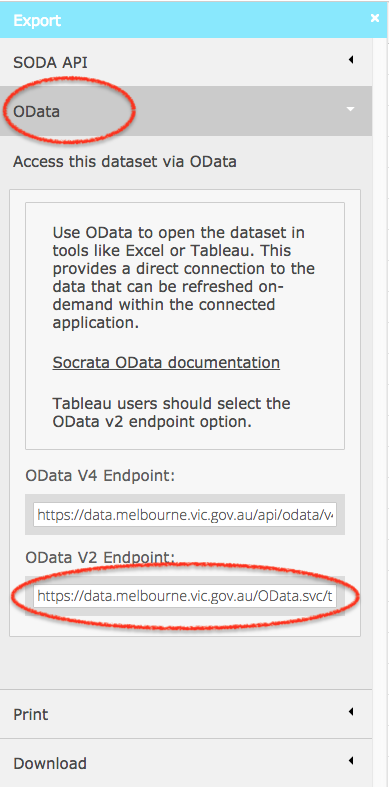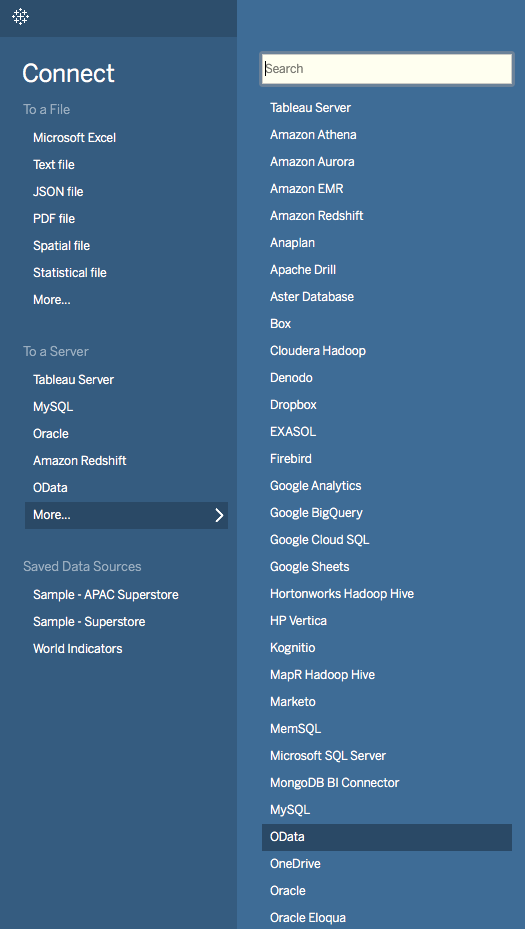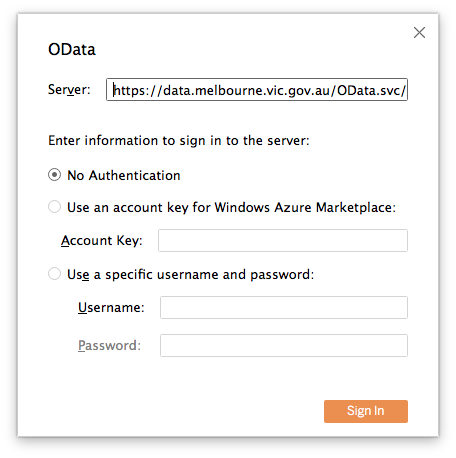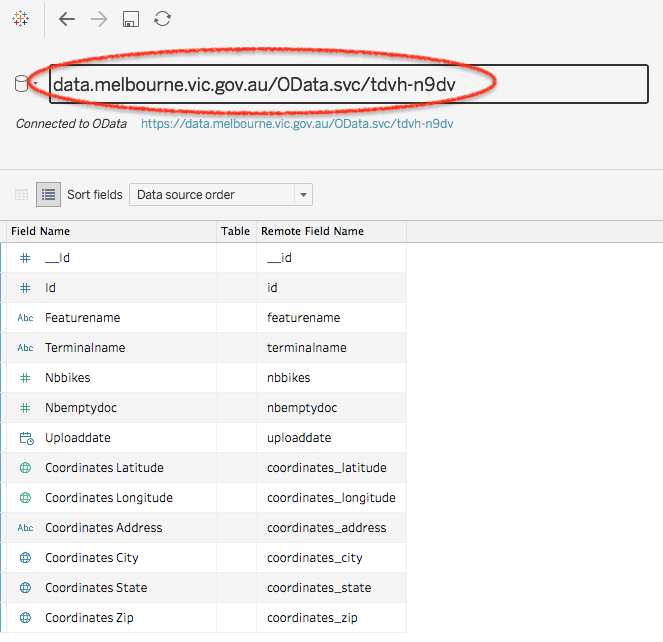Tableau & Socrata
Tableau is software that allows us to visualise datasets in ways more powerful than what basic open data portal web visualisers can – that was something you definitely experienced in our first class. It can be a useful tool for gaining more insight from your datasets.
This page shows a basic introduction on how to specifically target a dataset from the City of Melbourne's data portal at data.melbourne.vic.gov.au.
The most effective way to capture a dataset from data.melbourne.vic.gov.au is to use an OData connection within Tableau . You can also export as a XLS or CSV file before importing into Tableau, but we'll use the OData method to avoid dealing with additional files stored locally. Consider using local XLS or CSV files as a secondary option.
1. To get started, you will need to connect to the OData
url of the dataset. To get this special url, go to any published dataset, and click on View Data :

2. Once you get into the data view, click on Export
…

3. …and then expand the OData
section on the left panel of the screen. Copy the OData V2 Endpoint .

4. Launch Tableau. On the blue Connect screen, click on More… > OData
:

5. In the popup window that appears, paste the OData url into the Server field. You shouldn't need to authenticate, as this is public data. Click Sign In
, and you should now be able to see the contents of the dataset in Tableau.

6. If successful, you should see the following screen that shows the retrieved data structure. Take this opportunity to rename the data source to something more human-readable. In this case the highlighted box should be clicked on and renamed to “Melbourne Bike Share stations, with current number of free and used docks (every 15 minutes)”

If you get to this point without issue, you should now be able to work with the dataset within Tableau. Refer to the Tableau Learning video tutorials for more information.
Caveats
Importing data.melbourne.vic.gov.au data this way works really well for single-dataset visualisations. Tableau however does not allow us to do any cross-database unions with the OData format, a more advanced (and potentially more useful) method of analysing and visualising data. This means if you wish to correlate data points from multiple datasets, you will have to export those datasets as XLS or CSV files, and import them locally on your computer.
